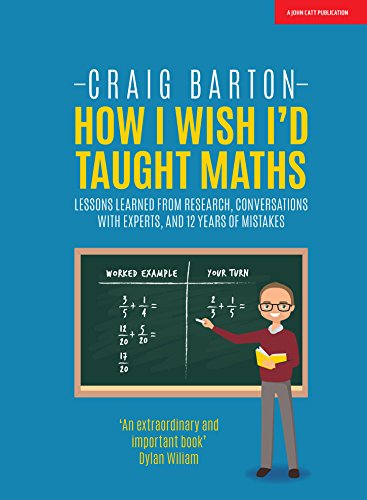Mrs Rebecca Brown, teacher of Maths at WHS, reviews Craig Barton’s book How I wish I’d taught Maths, focusing on Chapter 11 about formative assessment and diagnostic questions.
“without an effective formative assessment strategy we are in danger of teaching blindly, being completely unresponsive to the needs of our students.”
Craig begins this chapter by referencing the 2013 Dylan Wiliam tweet:
Example of a really big mistake: calling formative assessments ‘formative assessment’, rather than something like responsive teaching.
It’s only a too familiar scenario – you mention an assessment and a classroom (or staffroom!) erupts into a panic of more pressure and visions of tests, marking and grades. But how do we understand what our pupils know and where we need to begin or continue teaching them from? Even more crucial now, following a period of prolonged guided home learning. My key quotation from the chapter is when Craig explains that ‘without an effective formative assessment strategy we are in danger of teaching blindly, being completely unresponsive to the needs of our students’.
Formative assessment should be about ‘gathering as much accurate information about students’ understanding as possible in the most efficient way possible and making decisions based on that’. In short, it is about adapting our teaching to meet the needs of our students.
He describes elements of great teaching and cites one of Rosenshine’s (2012) ‘Principles of Instruction’ -to check for student understanding: ‘The more effective teachers frequently checked to see if students were learning the new material. These checks provided some of the processing needed to move new learning into long-term memory. These checks also let teachers know if students were developing misconceptions’.
Teaching is only successful if students have understood and learned something. Successful formative assessment can help us to identify problems and begin to fix things in the here and now much more effectively and efficiently. Asking ourselves, do I need to go over this point one more time or can I move on to the next thing?
Craig suggests the use of diagnostic questions to give quick accurate and useful information about students’ understanding. A good diagnostic question is a multiple choice, four-part question, with three incorrect answers that can help you to identify both mistakes and misconceptions. Each incorrect answer must reveal a specific mistake or misconception. If the question is designed well enough, then you should be able to gain reliable evidence about students’ understanding without having to have further discussions.
Diagnostic questions are designed to help identify, and crucially understand students’ mistakes and misconceptions in an efficient and accurate manner. They can be used at any time in a learning episode and are most effective when used throughout, using follow up questions to test the exact same skill as the first question.
Craig has developed a website of diagnostic questions that can be used in a variety of subjects. This year I will be trying to incorporate these into all of my lessons to ensure I have accurate, timely information on student understanding to enable me to effectively teach the girls that I have before me.

